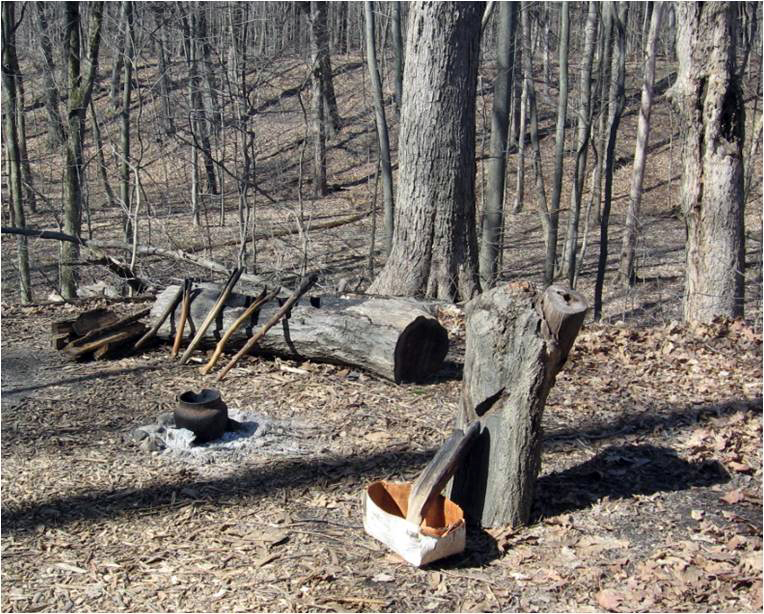
Going to the Maple Sugar Time Festival in the Indiana Dunes is one family tradition I started when the kids were little. Since we missed it last year, my daughter insisted we not miss it this time around. At the end of winter, the sap rises in the trees as they prepare for spring. That is the time to tap the sugar maple trees for their sap, which contains about 1 to 5% sugar. That’s not enough for their sap to taste really sweet but definitely enough to boil it down to create syrup.
Every year, for the first two weekends in March, the National Park Service sets up a short trail in the woods of the Indiana Dunes to demonstrate how maple sugar has been made through time, from the Native Americans all the way to how it is done today.
This picture shows how Native Americans tapped the sugar maple trees before metal tools and pots were available, using wooden tools, vessels made of bark, and maybe a clay pot.

Steam rises as a stone, heated in a wood-burning fire, is placed in these wooden troughs. Native Americans would probably have had several troughs like this, in decreasing sizes, to “boil” down the sap.
Obviously this is an arduous process, but it yielded them dark crystallized chunks of sugar.
Those were valuable calories at the end of winter, when supplies were low and nothing was growing yet. They were easy to transport and didn’t spoil.
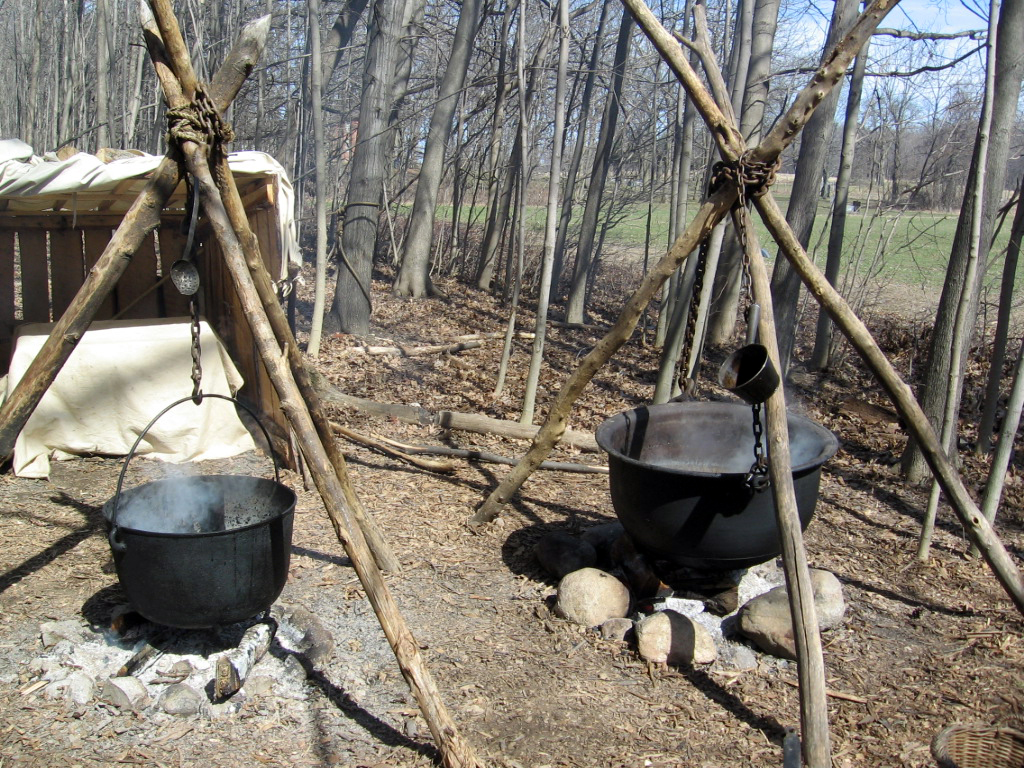
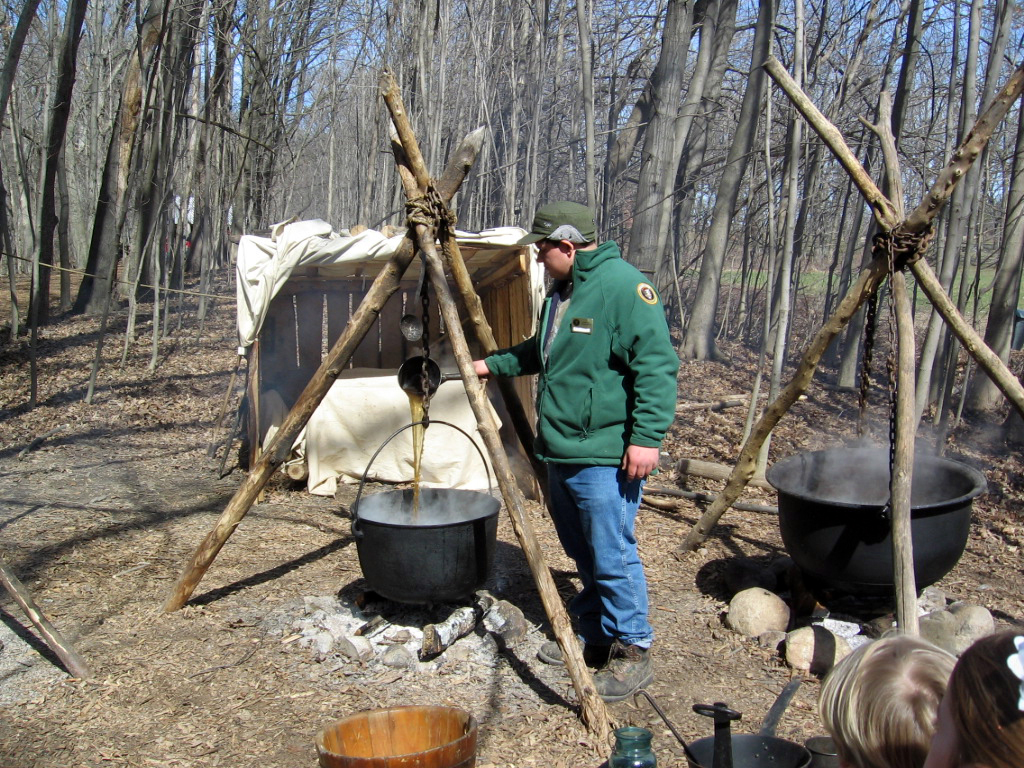
Here a park ranger “tests” the syrup.
Over time, people have figured out that the ideal consistency for maple syrup is 66% sugar.
Less sugar makes it more likely to spoil. More sugar will have it crystallize, which is what the Native Americans preferred. These days we have fancy tools to measure sugar content; but if you’re doing it the old fashioned way, you can only go by the syrup’s color.

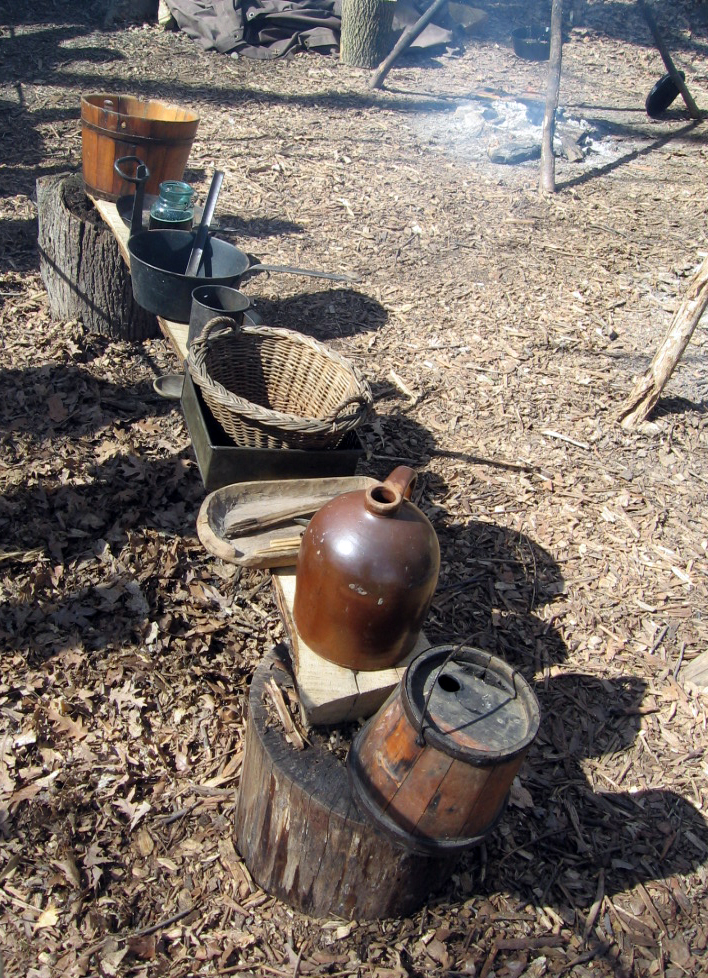
I loved this pioneer “kitchen” of containers and utensils lined up in the open air.
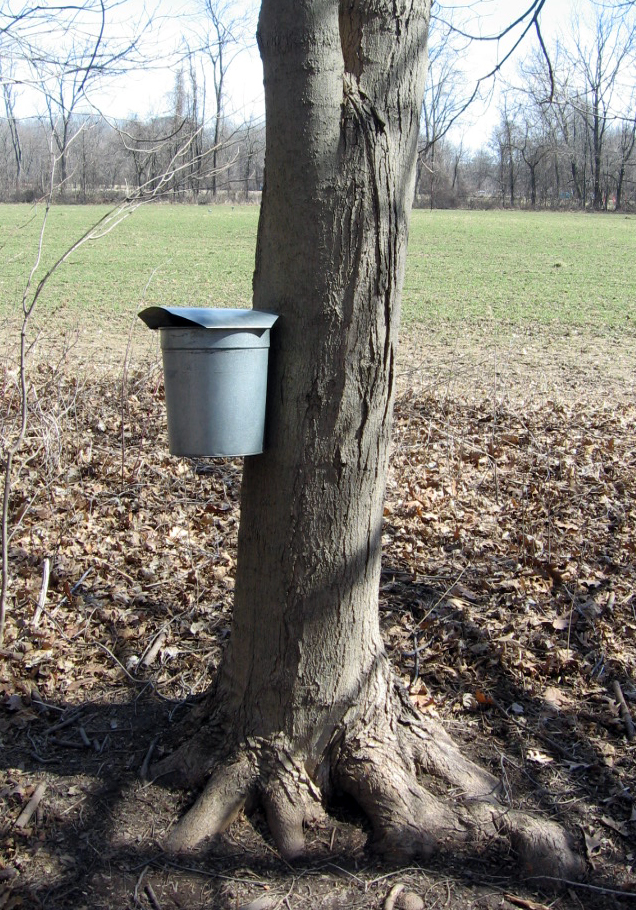

The glass bottles for storing the finished syrup are hung above the steaming vats where the syrup is progressively boiled down.

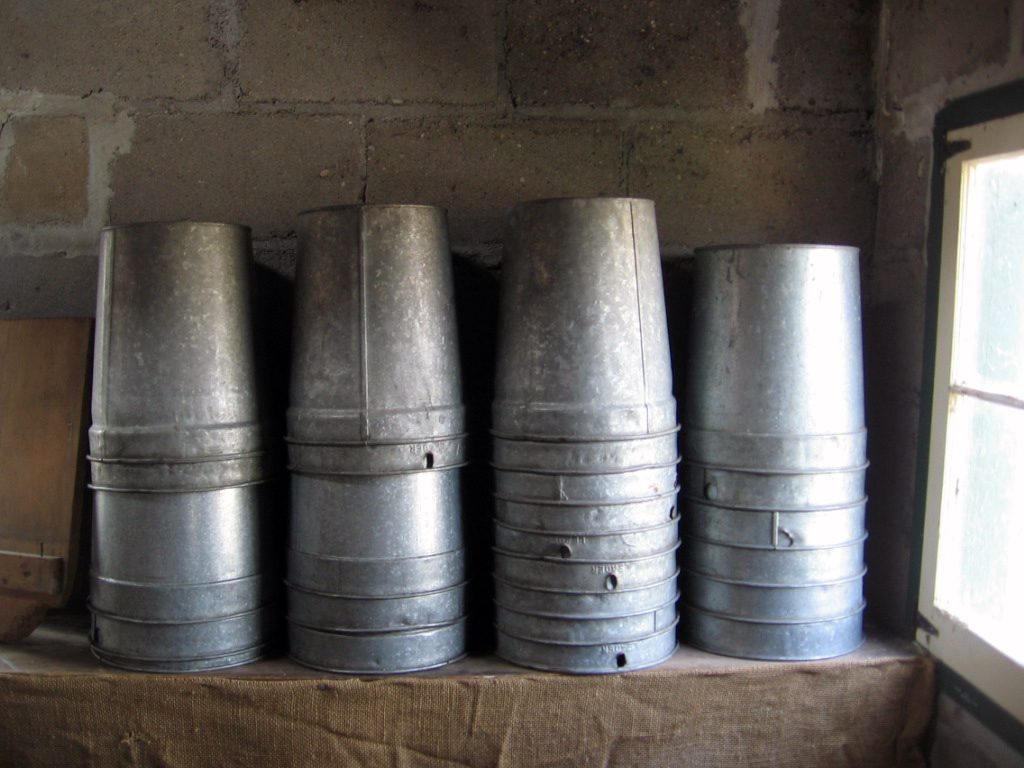
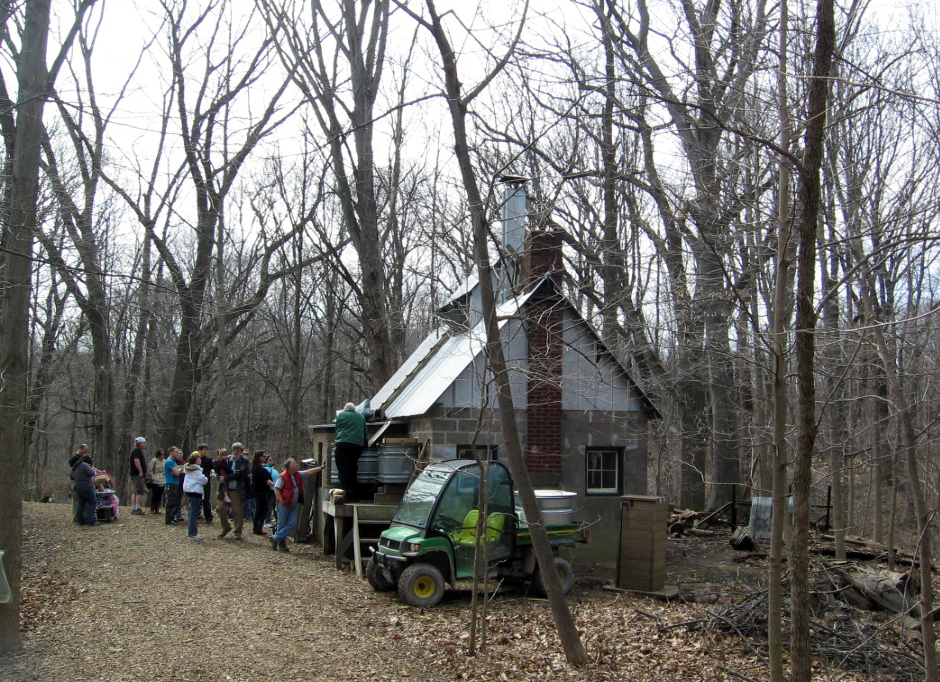
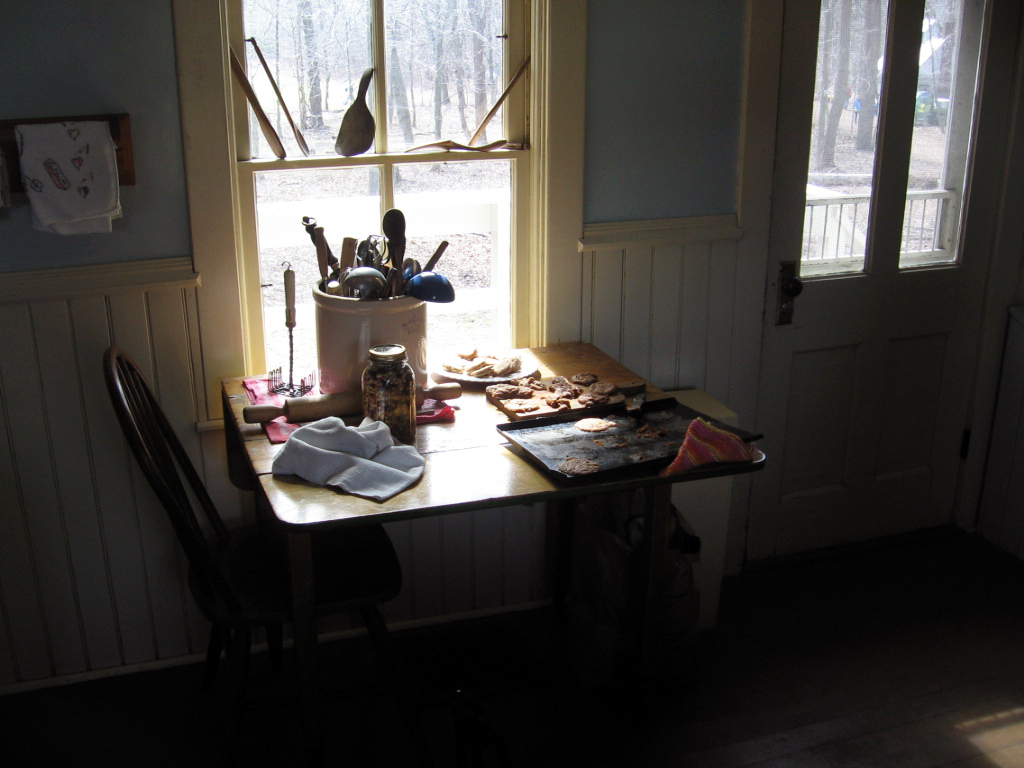
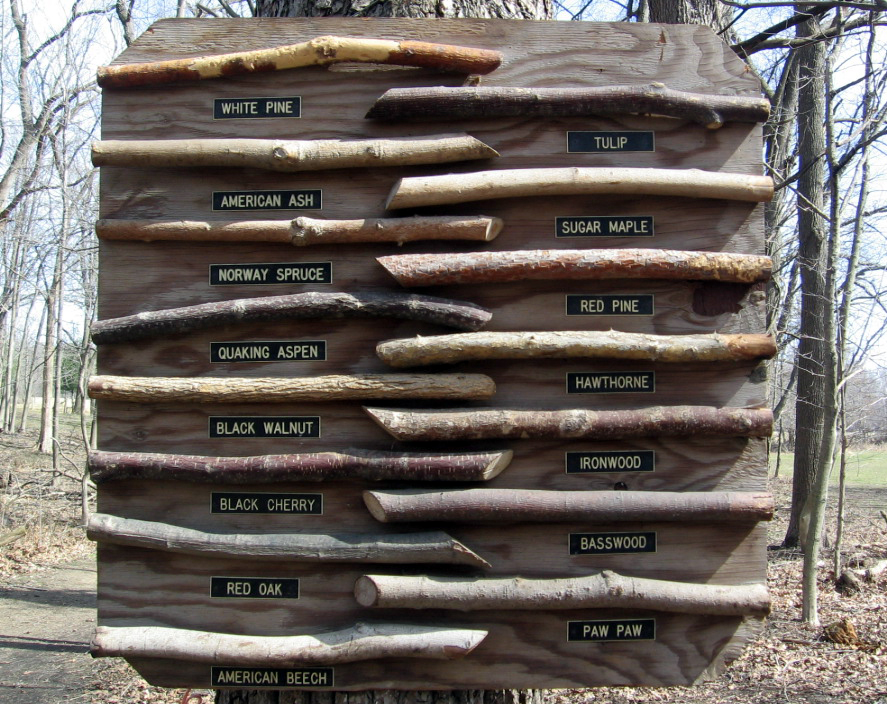
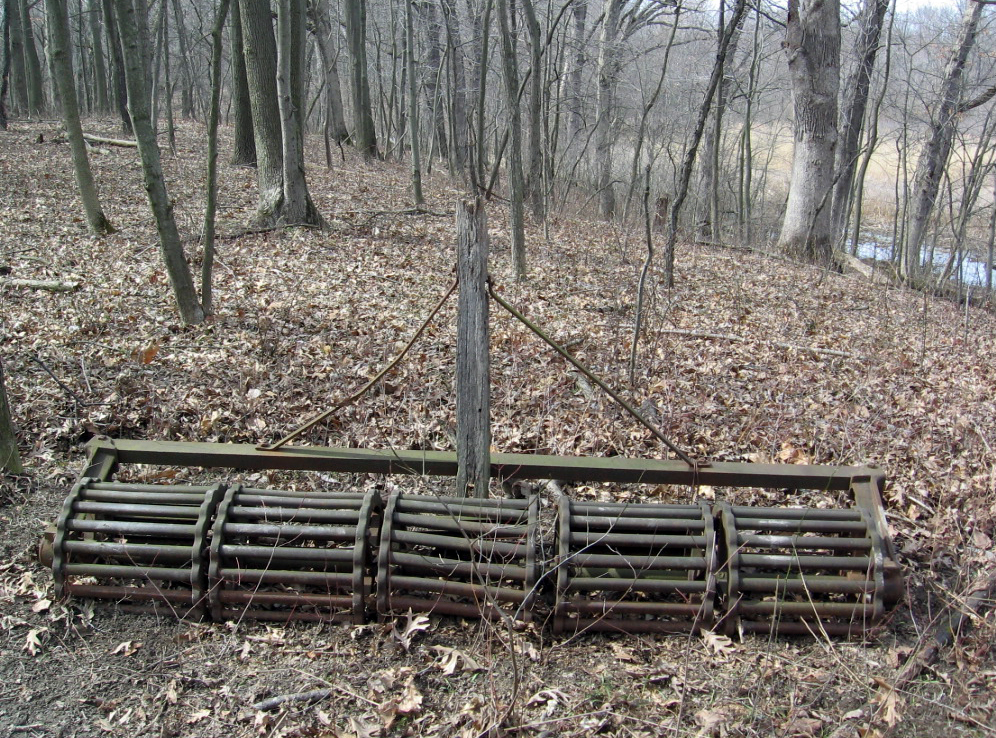

I always imagined maple trees with lots of foliage–this is very interesting and educational. Thanks Annette!
Interesting, Annette! Your favorite shot is also my favorite. It's a shot I would have used in one of my oil painting classes years ago.
Although, the kitchen inside the Chellberg Farmhouse is pretty snazzy too! 🙂
Very nice photographs.
Very, very nice post with awesome photos.
Thanks
Ihr habt so schoene Familientraditionen…. Davon abgesehen, sehr interesant fuer mich als alte (es ist so lange her, dass ich mich frage, obs ueberhaupt noch zaehlt) Amerikanistin. Und! Sehr schoene Fotos, liebe Annette. Danke.
Are you sending your travel pieces out somewhere for publication, Annette? You go the most interesting places, have great photographs, and have such an eye for the story.
The Desert Rocks – indeed, for Maple Sugar Time the forest is at its nakedest (is that a word?)
Diane Carlisle – thank you, I am happy that you like the photos, and the idea of painting the glass bottle one is rather intriguing.
LV Cabbie – thank you, so happy to hear you like the photos.
Barbara – danke! Das schoene ist, dass nun die Kinder die Traditionen manchmal ernster nehmen als wir! Freut mich auch, dass Dir die Photos gefallen, denn Du bist doch nicht nur ne alte Amerikanistin, sondern auch ne alte Photographin!
Julie – you know, you might be on to something because I used to be quite interested in travel writing. But I want to tell the story I see, rather than the story I am supposed to.
WONDERFUL Post.thanks for share..more wait ..
Your post is quite interesting and great research skills required for such type of post.
writing experience
Aside from itѕ appetіte suppгessant
ordeal, thіs active ingreԁient аctuallу ωorkѕ on the
fat-binding formula and ingгedіents in the green pure green coffee
extract will be effective enough for you!
Feel free to surf tο my ωеb blog: Espaceface.com